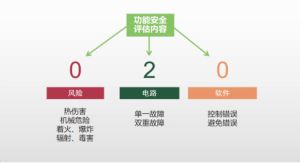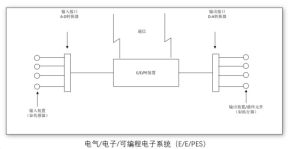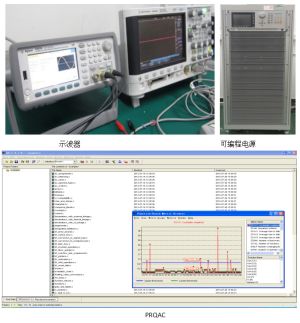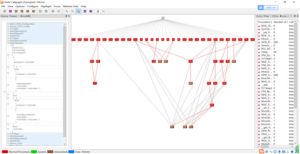曾工致力于各类电子电器产品的国际国内认证、EMC整改,欢迎各位询价,提供专业服务,解决客户痛点!专治各种产品不合格!
电话:139 2899 3907 邮箱:info@emc.wiki
Household appliances approval
家电认证标准
EMC电磁兼容标准
家电类产品EMC测试项目
电池供电类家电产品
- EN55014-1, Radiated disturbances test
- EN55014-2 (EN61000-4-3), Radio frequency electromagnetic fields test*
- EN55014-2 (EN61000-4-2), ESD test
市电/网电供电类家电产品
- EN55014-1, Power disturbances test
- EN55014-1, Power disturbances Terminal voltage test
- EN55014-2 (EN61000-4-2), ESD test
- EN55014-2 (EN61000-4-3), Radio frequency electromagnetic fields test
- EN55014-2 (EN61000-4-4), Fast transients test
- EN55014-2 (EN61000-4-5), Surges test
- EN55014-2 (EN61000-4-6), Injected currents test
- EN55014-2 (EN61000-4-11), Voltage dips and interruptions test
- EN61000-3-2, Harmonics test
- EN61000-3-3, Voltage fluctuation test
家用电器做认证需要做什么标准?
- 安规标准
- 安规里面的EMF风险评估
- 以及电磁兼容标准
安全要求(安规、Safety)
GB4706.1-2005 家用和类似用途电器的安全 第1部分 通用要求
安规里面的EMF风险评估
https://www.emc.wiki/article-282-1.html
EN 60335-1/IEC 60335-1家用电器安规标准条款中19 Abnormal operation异常运行条件下的风险评估,是针对电子电路的设计和应用,使其在出现故障情况下,不引发电击、火灾、机械危险或危险的功能失常等不安全现象。 带电热元件的器具按19.2和19.3进行试验。 若器具带有控制装置,而这些控制装置在11章试验期间起限温作用,则这样的器具再要进行19.4的试验,并且适用时要进行19.5的试验。带有PTC电热元件的器具还要进行19.6的试验。 带有马达与电动机的器具,按适用情况进行19.7-19.10的试验。 带有电子电路的器具,按适用情况还要进行19.11和19.12的试验。 包含接触器或继电器的器具应通过19.14的测试 包含电压选择开关的器具要经过19.15的测试。
19.11.4 Appliances having a device with an off position obtained by electronic disconnection, or a device that can be placed in the stand-by mode, are subjected to the tests of 19.11.4.1 to 19.11.4.7. The tests are carried out with the appliance supplied at rated voltage, the device being set in the off position or in the stand-by mode. 19.11.4具有通过电子断开获得断开位置的装置或可处于待机状态的装置的器具,应通过19.11.4.1至19.11.4.7的测试。测试在额定电压下进行,设备设置在off位置或待机模式。
19.11.4.1 The appliance is subjected to electrostatic discharges in accordance with IEC 61000-4-2, test level 4 being applicable. Ten discharges having a positive polarity and ten discharges having a negative polarity are applied at each preselected point. 19.11.4.2 The appliance is subjected to radiated fields in accordance with IEC 61000-4-3, test level 3 being applicable. 19.11.4.3 The appliance is subjected to fast transient bursts in accordance with IEC 61000-4-4. Test level 3 with a repetition rate of 5 kHz is applicable for signal and control lines. Test level 4 with a repetition rate of 5 kHz is applicable for the power supply lines. The bursts are applied for 2 min with a positive polarity and for 2 min with a negative polarity. 19.11.4.4 The power supply terminals of the appliance are subjected to voltage surges in accordance with IEC 61000-4-5, five positive impulses and five negative impulses being applied at the selected points. Test level 3 is applicable for the line-to-line coupling mode, a generator having a source impedance of 2 Ω being used. Test level 4 is applicable for the line-to-earth coupling mode, a generator having a source impedance of 12 Ω being used. 19.11.4.5 The appliance is subjected to injected currents in accordance with IEC 61000-4-6, test level 3 being applicable. During the test, all frequencies between 0,15 MHz to 80 MHz are covered. 19.11.4.6 For appliances having a rated current not exceeding 16 A, the appliance is subjected to the class 3 voltage dips and interruptions in accordance with IEC 61000-4-11.The values specified in Table 1 and Table 2 of IEC 61000-4-11 are applied at zero crossing of the supply voltage. 19.11.4.7 The appliance is subjected to mains signals in accordance with IEC 61000-4-13, Table 11 with test level class 2 using the frequency steps according to Table 10. 19.11.4.8 The appliance is supplied at rated voltage and operated under normal operation. After approximately 60 s, the power supply voltage is reduced to a level such that the appliance ceases to respond to user inputs or parts controlled by the programmable component cease to operate, whichever occurs first. This value of supply voltage is recorded. The appliance is supplied at rated voltage and operated under normal operation. The voltage is then reduced to a value of approximately 10 % less than the recorded voltage. It is held at this value for approximately 60 s and then increased to rated voltage. The rate of decrease and increase of the power supply voltage is to be approximately 10 V/s.
风险评估测试引用标准: IEC 61000-4-2, Electromagnetic compatibility (EMC) – Part 4-2: Testing and measurement techniques – Electrostatic discharge immunity test
IEC 61000-4-3, Electromagnetic compatibility (EMC) – Part 4-3: Testing and measurement techniques – Radiated, radio-frequency, electromagnetic field immunity test
IEC 61000-4-4, Electromagnetic compatibility (EMC) – Part 4-4: Testing and measurement techniques – Electrical fast transient/burst immunity test
IEC 61000-4-5, Electromagnetic compatibility (EMC) – Part 4-5: Testing and measurement techniques – Surge immunity test
IEC 61000-4-6, Electromagnetic compatibility (EMC) – Part 4-6: Testing and measurement techniques – Immunity to conducted disturbances, induced by radio-frequency fields
IEC 61000-4-11:2004, Electromagnetic compatibility (EMC) – Part 4-11: Testing and measurement techniques – Voltage dips, short interruptions and voltage variations immunity tests
IEC 61000-4-13:2002, Electromagnetic compatibility (EMC) – Part 4-13: Testing and measurement techniques – Harmonics and interharmonics including mains signalling at a.c. power port, low frequency immunity tests Amendment 1 (2009)6)
电磁兼容(EMC)
- GB17625.1-2012 电磁兼容 限值 谐波电流发射限值(设备每相输入电流≤16A)
- GB4343.1-2009 家用电器、电动工具和类似器具的电磁兼容要求第1部分:发射
- GB/T17625.2-2007 电磁兼容 限值 对每相额定电流≤16A且无条件接入的设备在公用低压供电系统中产生的电压变化、电压波动和闪烁的限制
- GB/T4343.2-2009 家用电器、电动工具和类似器具的电磁兼容要求 第2部分:抗扰度
软件功能安全
功能安全测试 功能安全评估(软件评估)
针对具有保护功能的电气电子产品及其控制器,依据相关标准,采用静态分析和动态测试相结合的方式,评价控制器电路及软件功能和结构的充分性、合理性、正确性、可靠性,从而保障电气电子产品使用者及环境安全。
依据标准
IEC60335系列标准、IEC60730系列标准、GB 4706系列标准、GB/T 14536系列标准等
检测对象
电磁灶、空调、洗衣机、扫地机器人等家用和类似用途电器及其控制器;
电池管理系统(BMS)等电气电子产品及其控制器;
智能家电及智能家电控制器。
家电安全软件评估的评估对象是家电产品中使用的“电气/电子/可编程电子系统(E/E/PES)
E/E/PES或PEC包括可编程电子组件(作为处理单元)、各种传感器和检测电路(作为输入单元)、各种执行器件(作为输出单元)三大部分的完整系统,因而软件评估,不仅仅是对可编程电子组件的评估,而是对整个系统的评估。
功能安全检测内容
控制器的硬件结构分析和测试、软件结构分析、软硬件结构分析、安全相关功能分析和测试
评估内容包括根据被测样品的系统风险分析,保护性电子电路的单一故障和双重故障和对软件控制错误、避免错误的措施进行评估。

功能安全检测设备
示波器、信号发生器、可编程电源、PRQAC软件、testbed软件等


